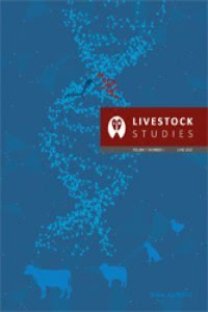KINALI KEKLİKLERDE (Alectoris chukar) ERKEK-DİŞİ ORANININ KULUÇKA ÖZELLİKLERİNE ETKİLERİ
Bu çalışmada, kınalı kekliklerde erkek-dişi oranı 1:1, 1:2, 1:3 ve 1:4 olmasının bazı kuluçka sonuçlarına etkilerinin belirlenmesi amaçlanmıştır. Araştırma tesadüf parselleri deneme deseninde dört tekerrürlü olarak yürütülmüştür. Elde edilen veriler SPSS paket programında Kruskal-Wallis testi ile analiz edilmiştir. Elde edilen bulgulardan, farklı erkek-dişi oranının döllülük, çıkış gücü, kuluçka randımanı, kabukaltı ve embiryonik ölümler üzerine etkilerinin önemli olmadığı saptanmıştır. Döllülük oranı değerleri 1:1, 1:2, 1:3 ve 1:4 gruplarında sırasıyla %83.47 5.89, 77.085.93, 69.92 3.55 ve 68.01 6.58 çıkış gücü değerleri aynı sırayla %87.68 6.26, 74.43 6.84, 84.40 5.43 ve 85.79 3.51 olarak hesaplanmıştır. Kuluçka randımanı değerleri ise %72.97 6.15, 57.13 6.40, 59.316.21 ve 58.68 6.86 olarak saptanmıştır. Sonuç olarak, erkek başına düşen dişi sayısı arttıkça döllülük oranı azalmakta, döllülük ve embiryonik ölüm oranlarına bağlı olarak da kuluçka randımanı ve çıkış gücü değişmektedir.
Anahtar Kelimeler:
Keklik, Döllülük, Kuluçka Randımanı, Erkek:Dişi Oranı
The Effects of Male and Female Ratio on Hatchability Traits of Partridges (A. chukar)
The aim of this research was to determine the effects of different mating ratio of one male to one female, one male to two females, one male to three females and one male to four females on fertility of partridges of alectoris chukar and some incubation results. Completely randomized desing with four repetition was used in this research. The data were analyzed by Kruskal-Wallis test in SPSS programe. From obtained data, fertility, hatchability of fertile egg and hatchability traits were not affected significantly by different mating ratios. At the ratio of one male to the one female, one male to the two females, one male to the three females and one male to the four females groups the values were determined as 83.47± 5.89, 77.08±5.93, 69.92± 3.55 and 68.01± 6.58% for fertility ratio, 87.68± 6.26, 74.43± 6.84, 84.40± 5.43 and 85.79± 3.51% for hatchability, 72.97± 6.15, 57.13± 6.40, 59.31±6.21 and 58.68± 6.86 % for hatchability of fertile eggs, respectively. As a result, fertility ratio was decreased when the female number per male was increased. Also, hatchability and hatchability of fertile eggs were changed depending on fertility and embryonic death ratios
Keywords:
Partridge, Fertility, Hatchability, Male:Female Ratio,
- Yayın Aralığı: Yılda 2 Sayı
- Başlangıç: 1959
- Yayıncı: Sezer ÖZ
Sayıdaki Diğer Makaleler
Sinan KOPUZLU, Hakkı EMSEN, Abdulkadir ÖZLÜTÜRK, Ahmet KÜÇÜKÖZDEMİR
ANKARA KEÇİLERİNDE BAZI ÜREME ÖZELLİKLERİ
Halil EROL, Ali BİLGEN, Serpil SARIÖZKAN
SIĞIRLARDA OVUM PİCK-UP (OPU) TEKNİĞİ KULLANILARAK İN VİTRO EMBRİYO ÜRETİMİ
Numan AKYOL, Sedat Hamdi KIZIL, Tahir KARAŞAHİN, Muharrem SATILMIŞ, Yutaka HASHIYADA
Ali BİLGEN, Numan AKMAN, Halil EROL, Bekir ANKARALI, Melik AYTAÇ
KINALI KEKLİKLERDE (Alectoris chukar) ERKEK-DİŞİ ORANININ KULUÇKA ÖZELLİKLERİNE ETKİLERİ
